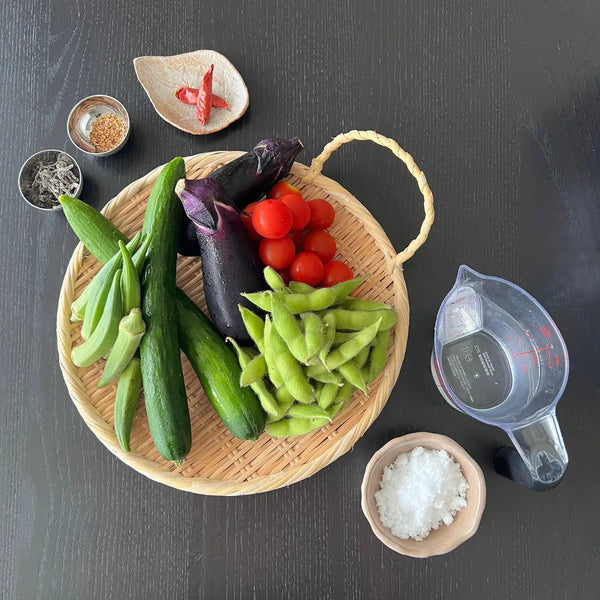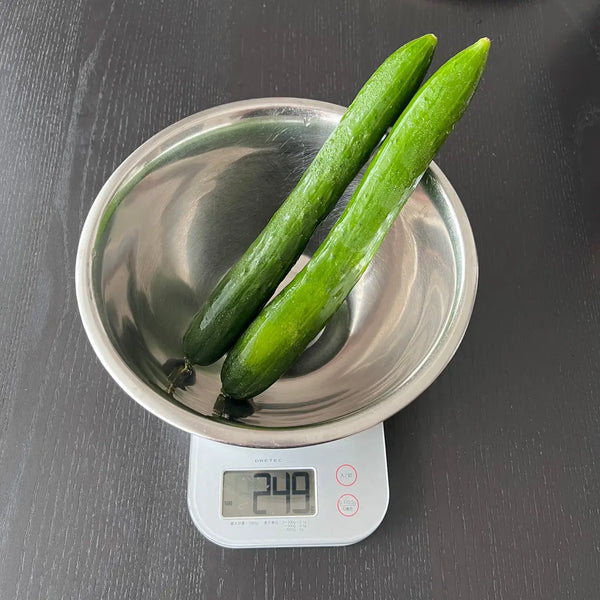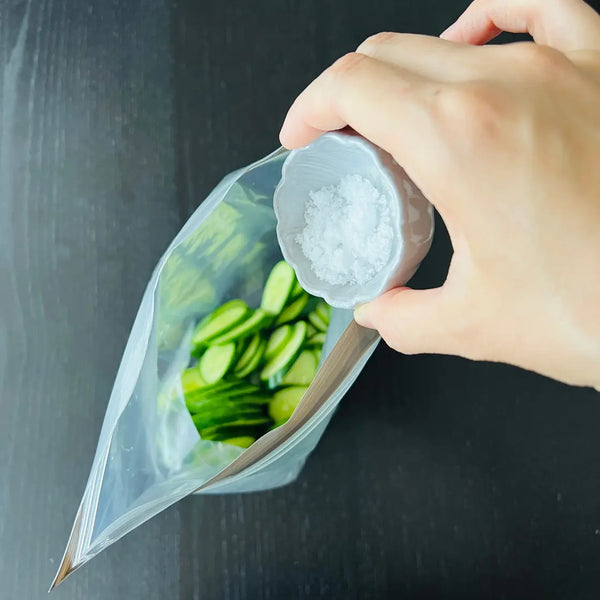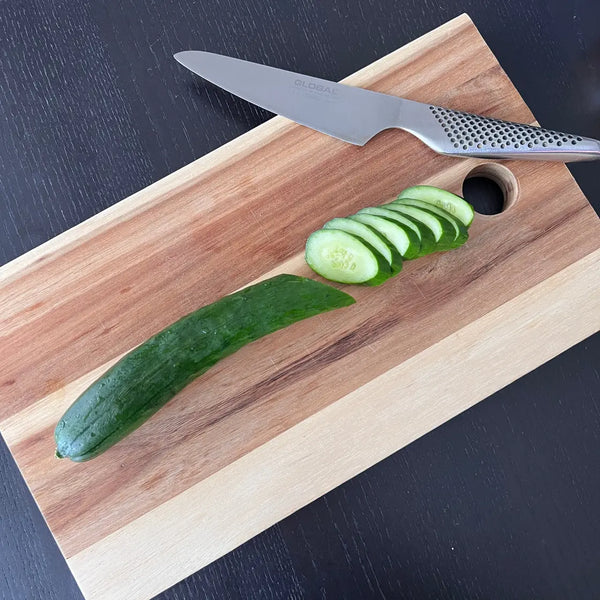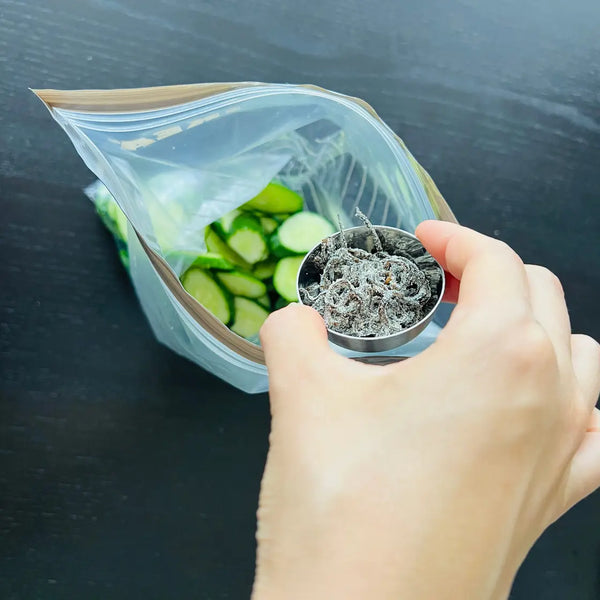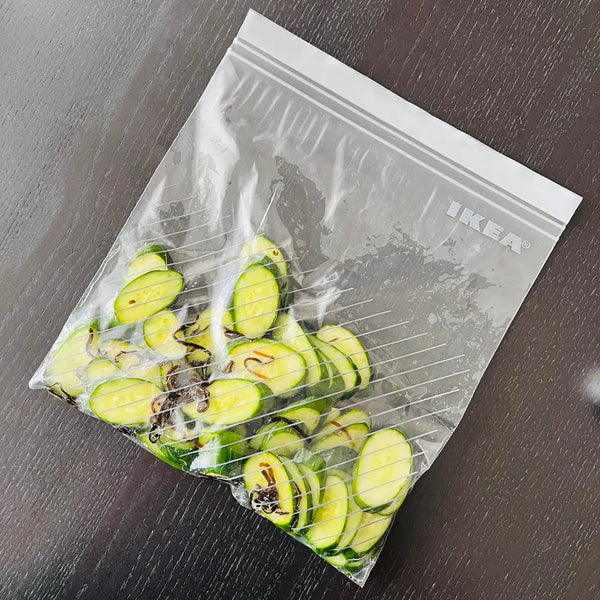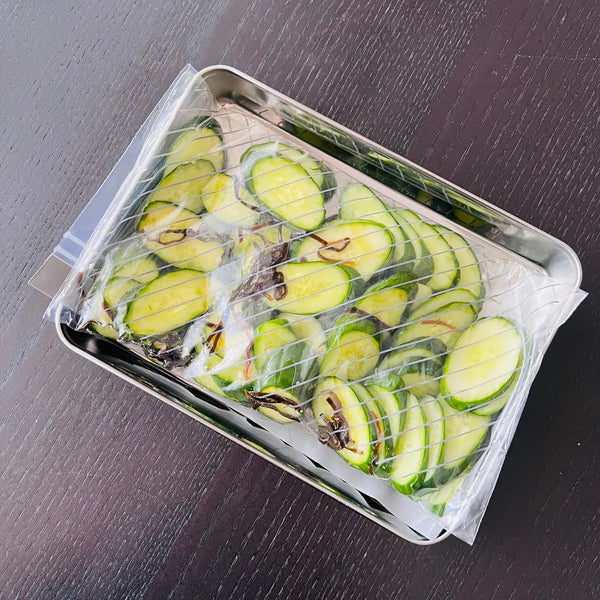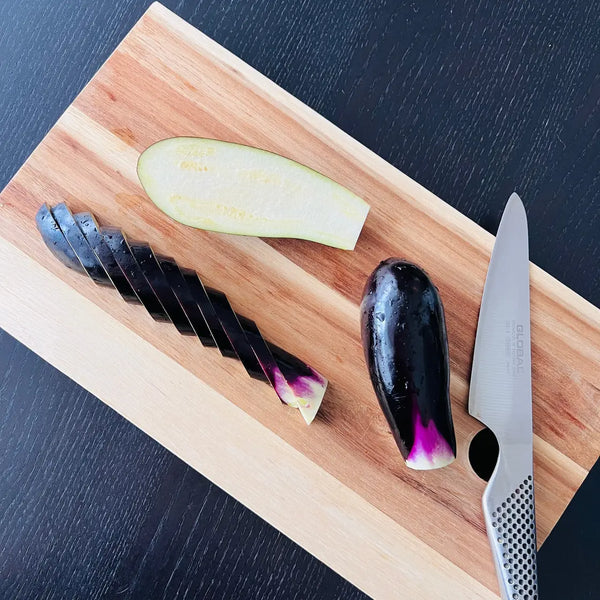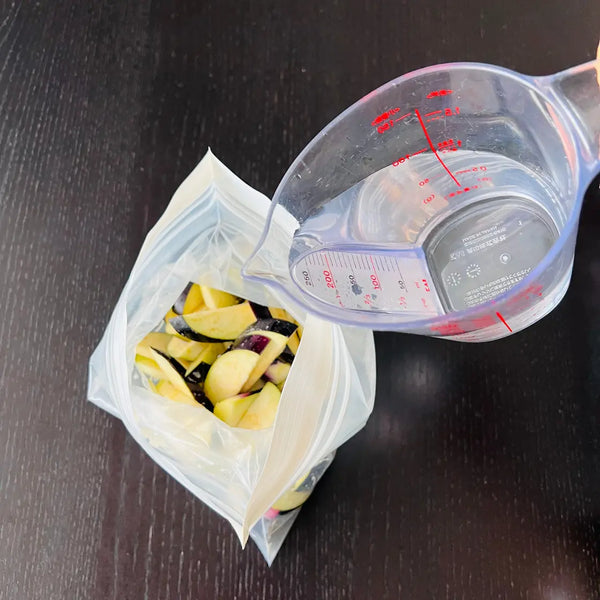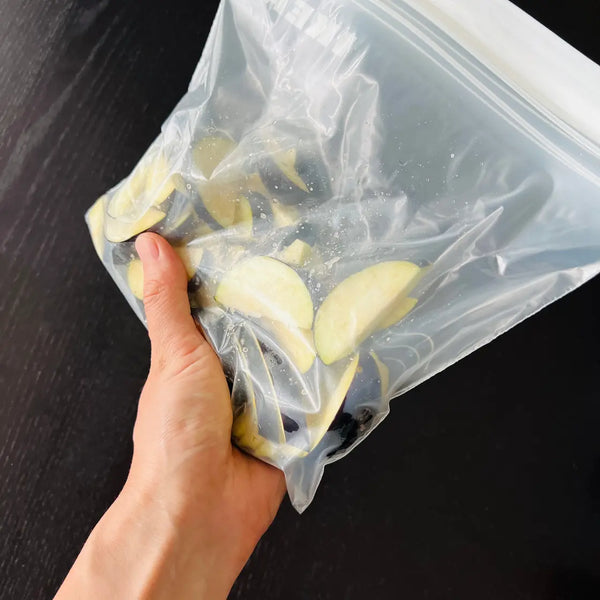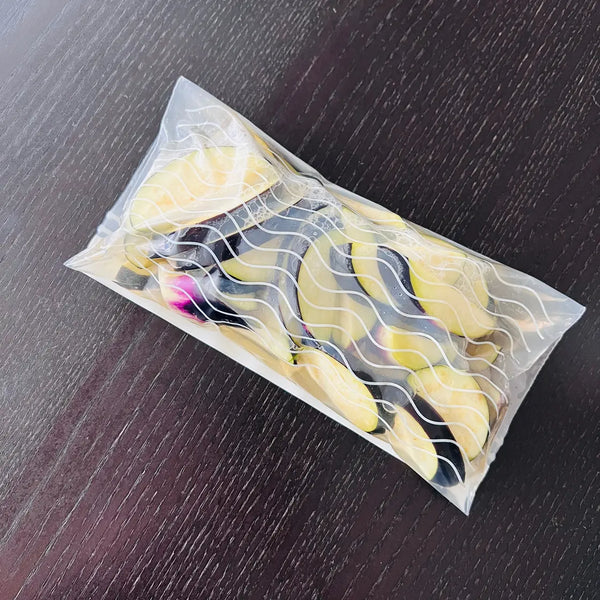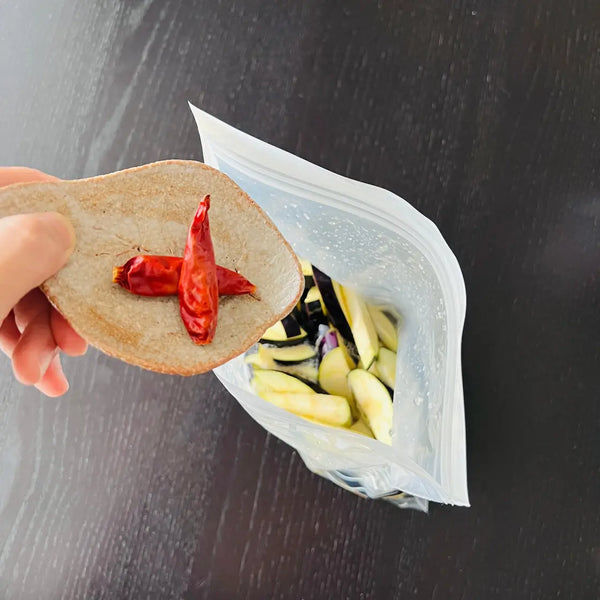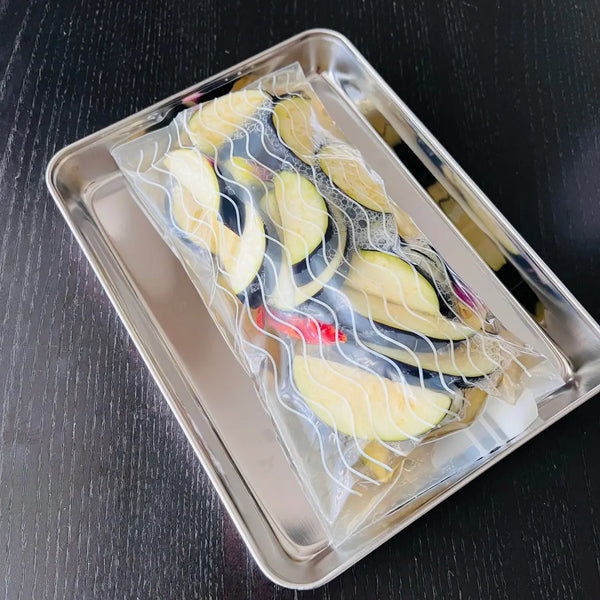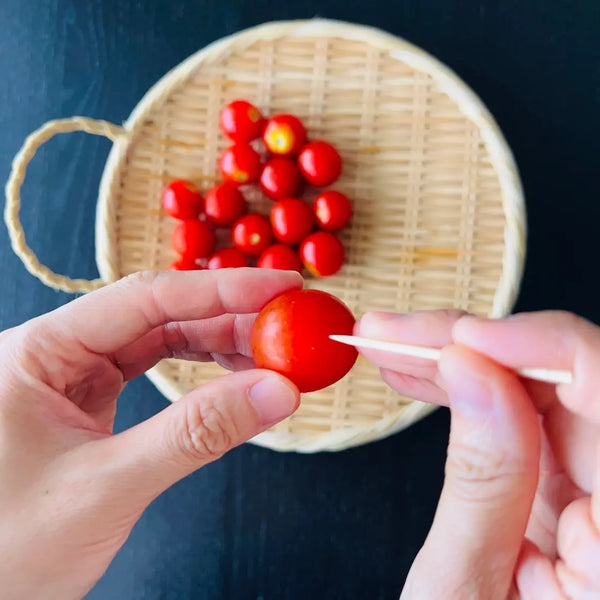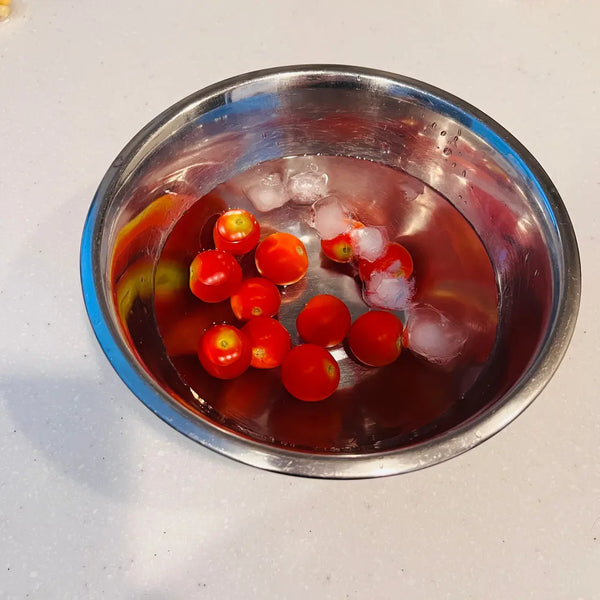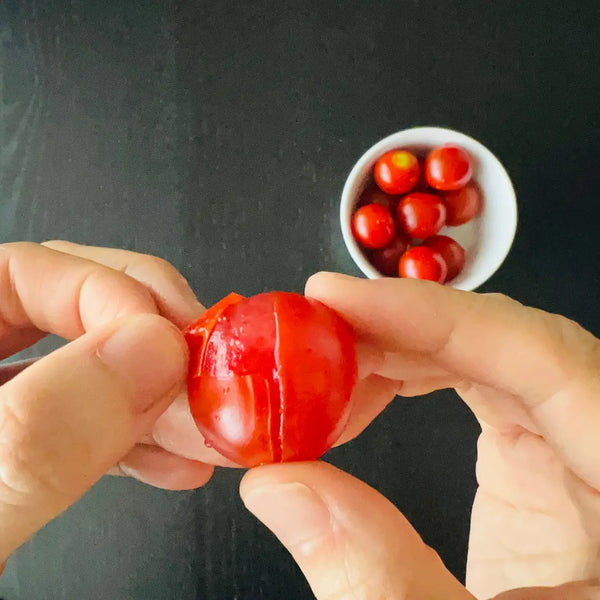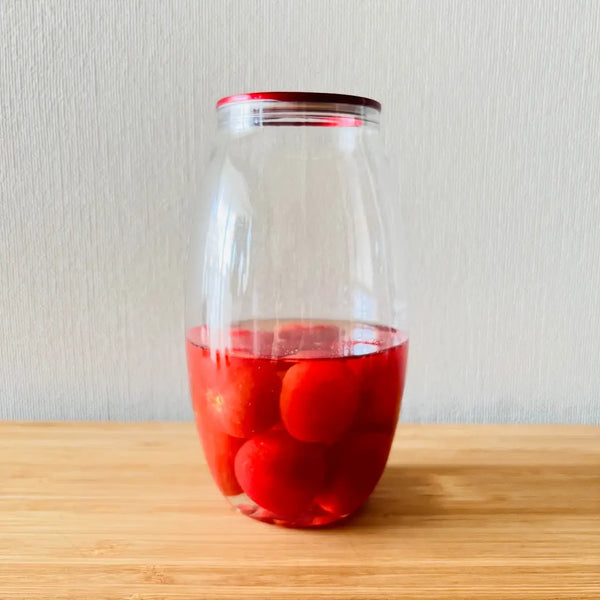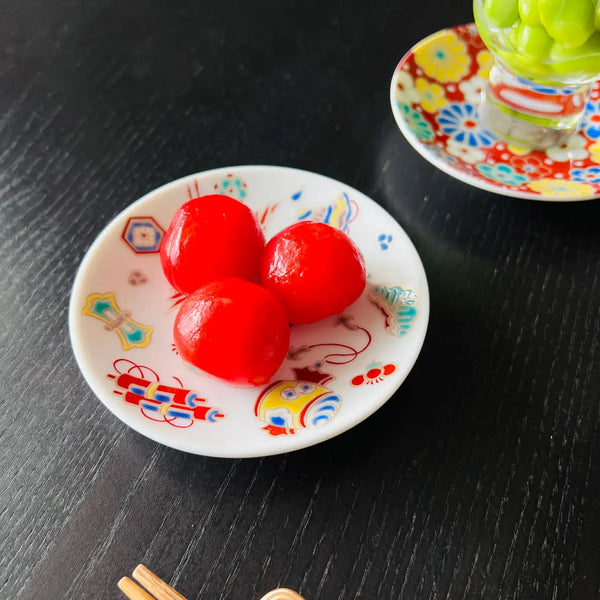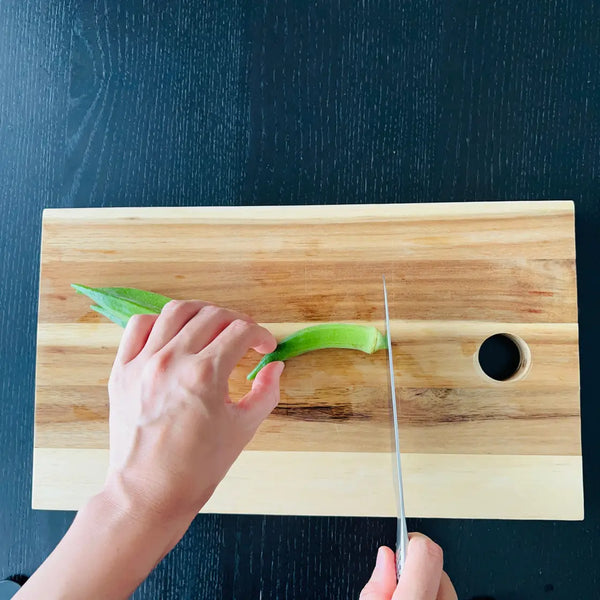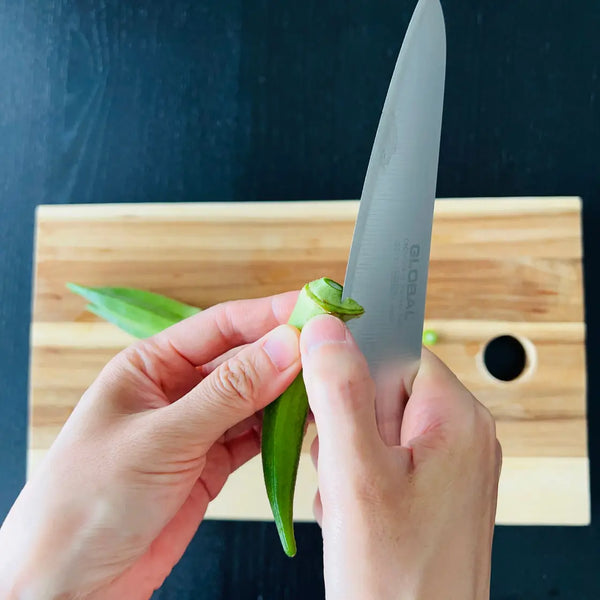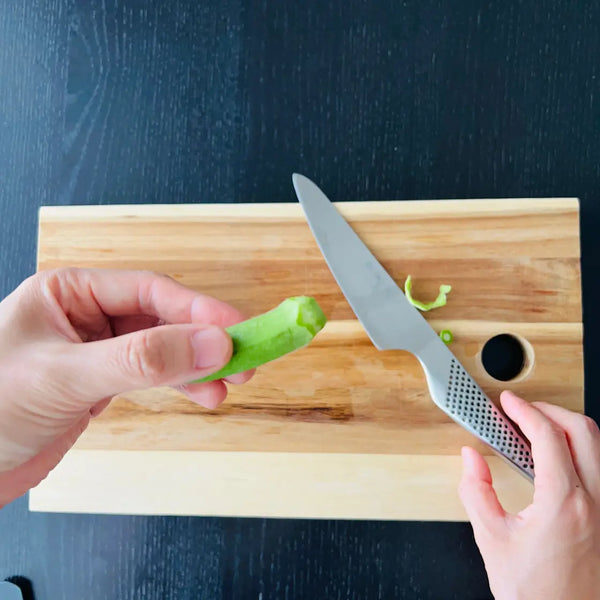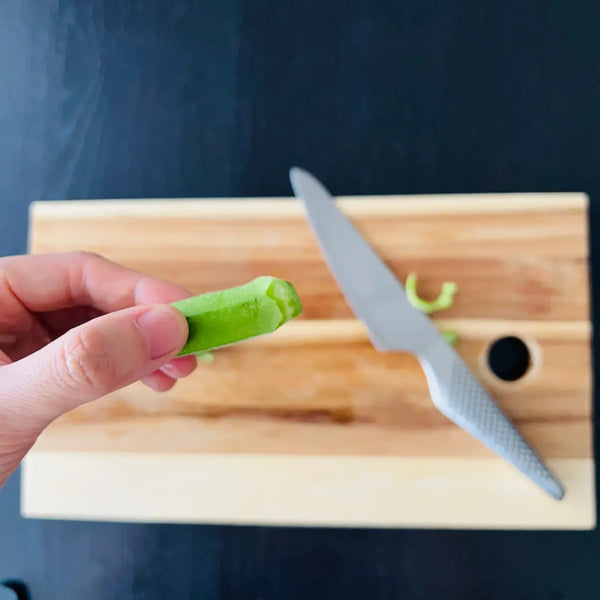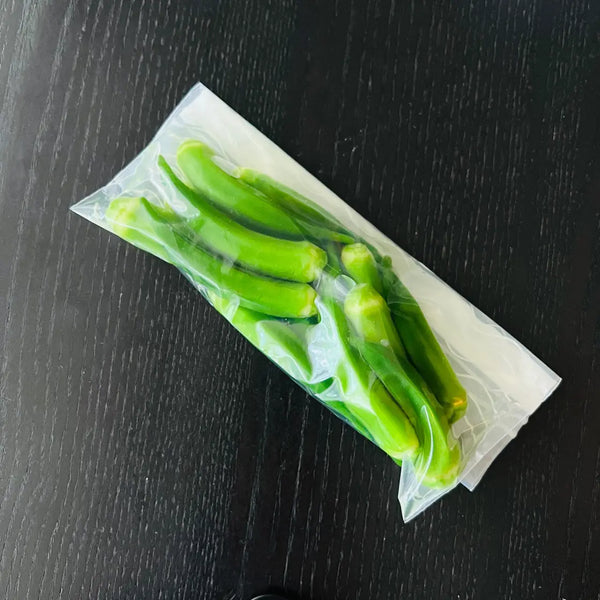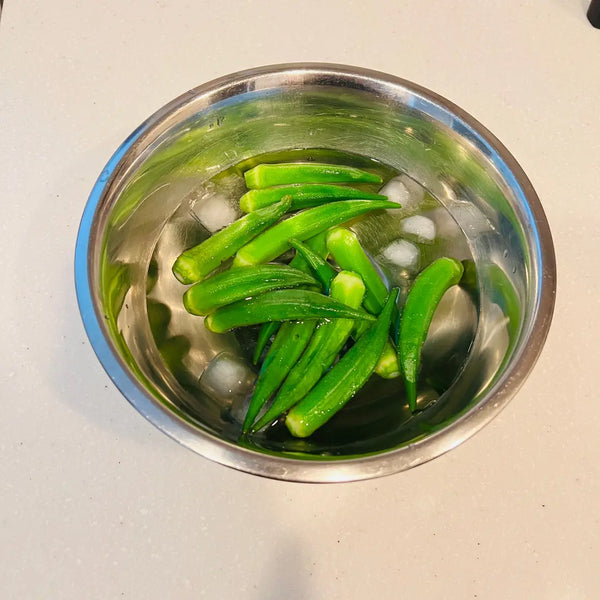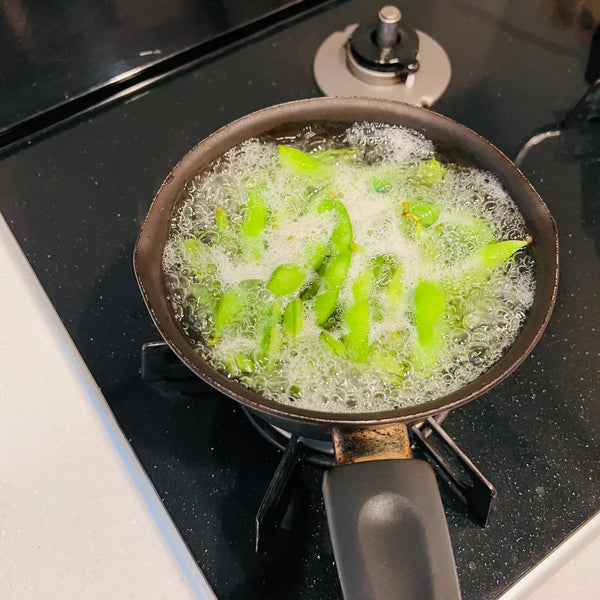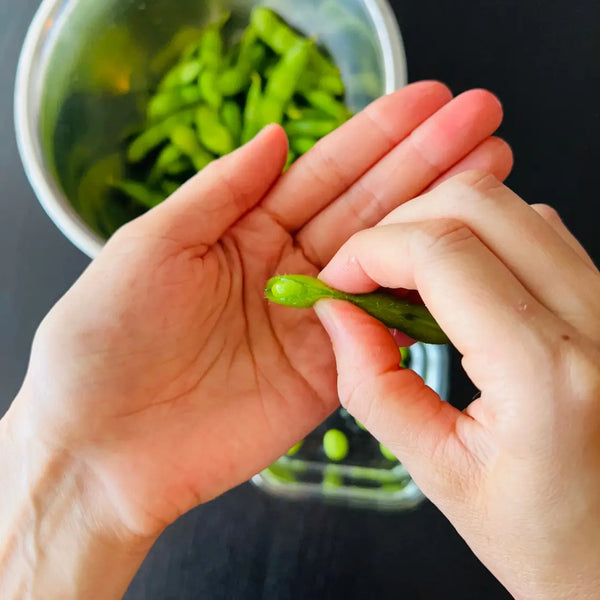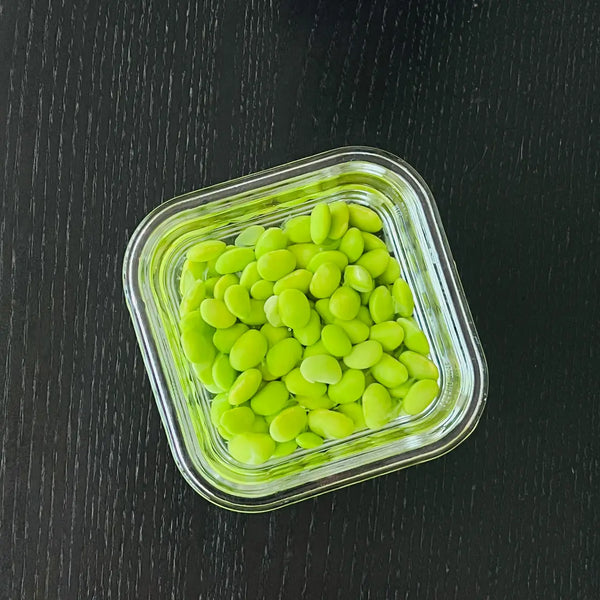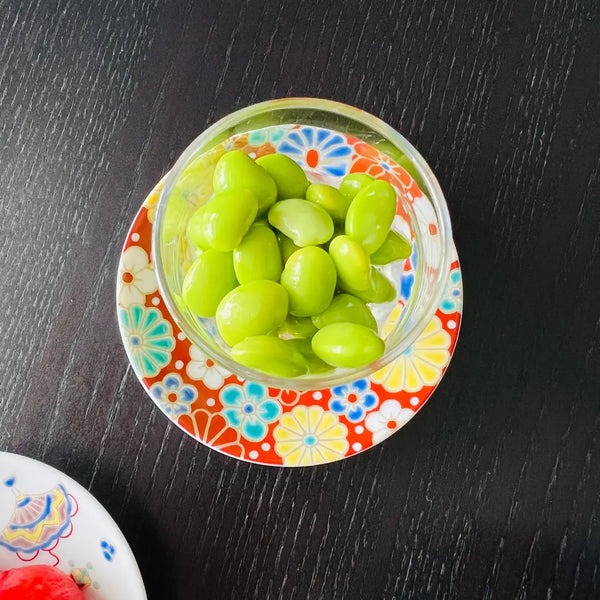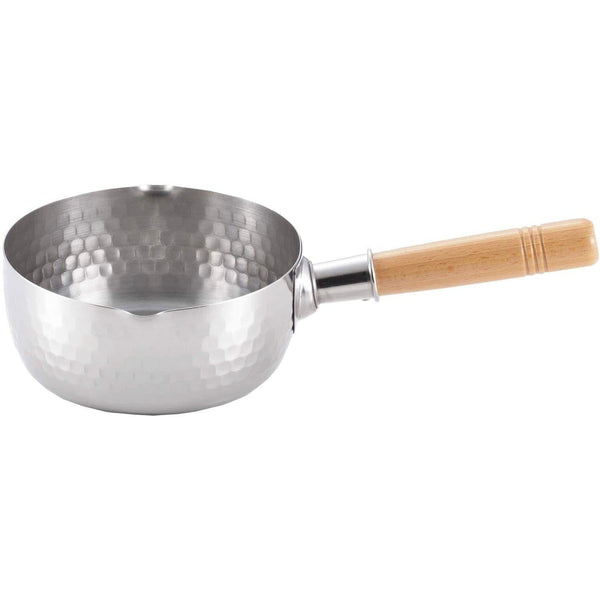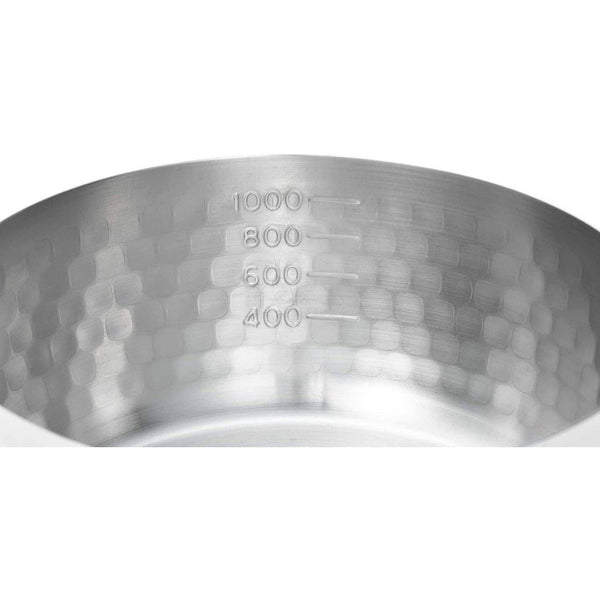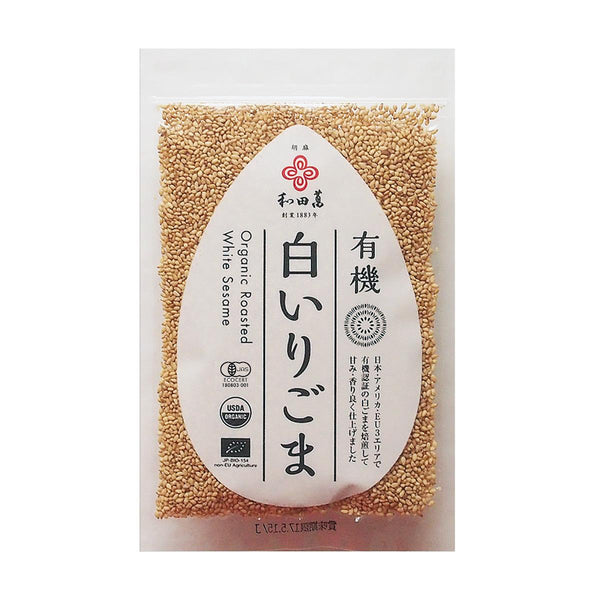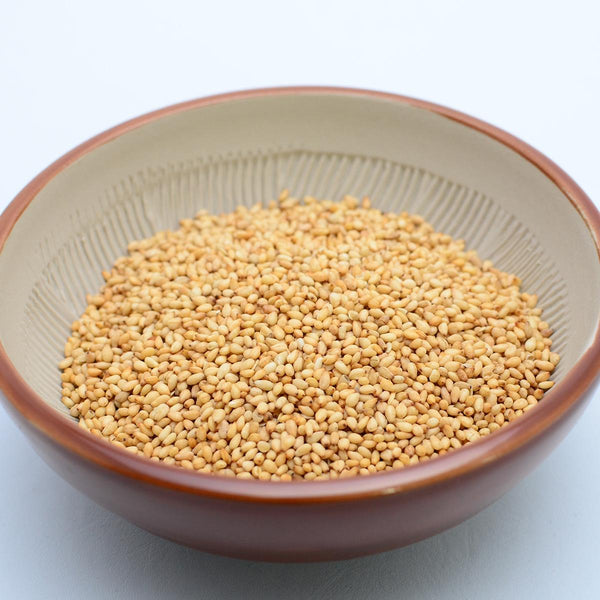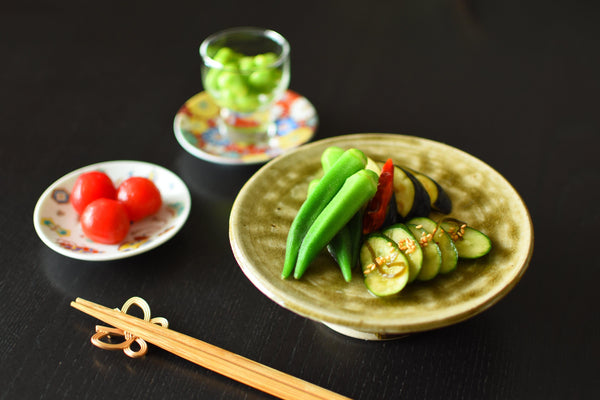
“Tsukemono” or Japanese pickles, have been loved by Japanese people for a long time. It is one of the typical side dishes that pairs well with rice and is often enjoyed with alcohol. Tsukemono is usually made with vegetables such as Japanese white radish (daikon), carrots, cucumbers, or whatever fresh vegetables are in season. Tsukemono is not a representative dish but is an indispensable way to enjoy Japanese cuisine.
There are different varieties of Tsukemono in Japan which are split into two categories. Without going into too much detail, one type of tsukemono requires days to months of fermentation, while the other requires just an hour or up to half a day. Today, we’ll introduce the latter, also known as “Asazuke” in Japanese.
Asazuke pickles are lightly pickled in seasoning (like salt, sugar, and so on) or a seasoning liquid (seasoning+water, vinegar, soy sauce, etc.). In this recipe, we will just use salt as a seasoning and salt water as the seasoning liquid. You can choose whether you just want to use salt or salt water depending on the vegetable.
This quick and easy type of Tsukemono is very convenient as you can make it with just a few ingredients. As Asazuke is a simple dish, the taste also depends on the quality and freshness of the vegetables you use. You can use what’s growing in your garden or vegetables in season at your local farmer’s markets. This time, we chose typical Japanese summer vegetables: cucumber, eggplant, okra, edamame, and cherry tomatoes.
When it comes to making this style of tsukemono at home, all you need to prepare is only vegetables you like and sea salt. For the “salt”, we recommend you use natural sea salt because it permeates easier into the ingredients than regular salt. It also gives the vegetables a unique savory taste. Just using salt is enough to make simple Tsukemono, but if you want to take things up a notch, you can add some other flavors like kombu seaweed, chili peppers, yuzu, ginger, sesame seeds, etc.
Enjoy using your favorite vegetables and making your own Tsukemono at home. Let us know in the comments below how your homemade Asazuke Tsukemono turns out!

